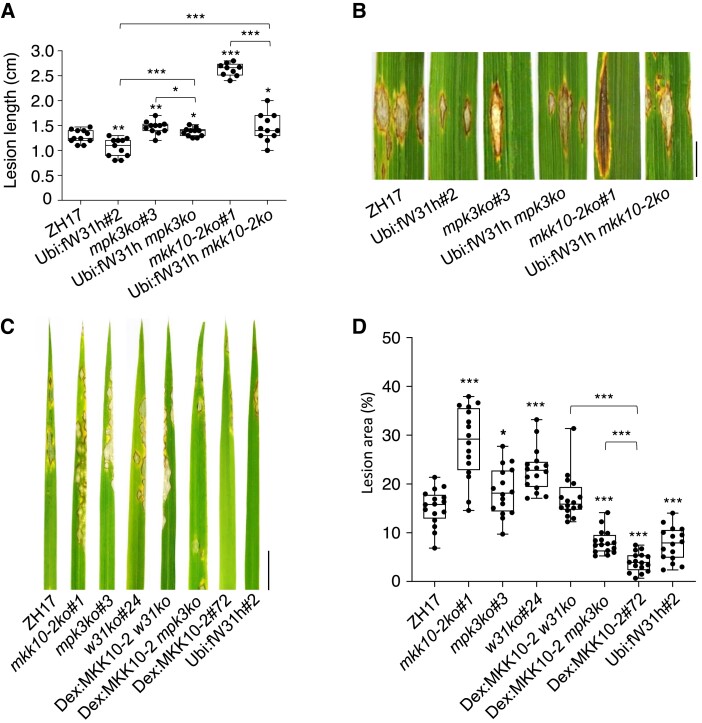Figure 3.
OsWRKY31 and OsMPK3 are involved in OsMKK10-2 activated disease resistance. Lesion length A) and disease symptoms B) of the transgenic and wild-type ZH17 plants after infiltration with M. oryzae SZ strain. Plants of tillering stage (about 3-mo-old) in paddy field were injected with SZ spores (1 × 105 conidia mL−1) in year 2020. The segments of leaves were photographed and quantified at 9 d after the infiltrations. The median was the crossline in each boxplot showing the lesion length distributions (n ≥ 9). Disease symptoms C) and lesion areas D) of the transgenic and ZH17 plants infected with SZ strain by spraying. Eighteen-day-old plants were inoculated with SZ spores (5 × 105 conidia mL−1) by foliar spraying; the Dex-inducible lines were treated with 20 µM Dex for 12 h before the pathogen inoculation and the other plants were received with DMSO as the mock. Evaluation of disease severity and photography taken were conducted at 7 d after the inoculation. Ubi:fW31h mkk10-2ko for Ubi:fW31h and mkk10-2ko genetic crossing progeny; other plants described in Fig. 2. The median was the crossline in each boxplot showing the lesion area distributions (n = 16). Significance was evaluated by comparing with ZH17 or each other as bracketed using the Student's t-test (*, P < 0.05; **, P < 0.01; ***, P < 0.001). Bar = 1 cm.

